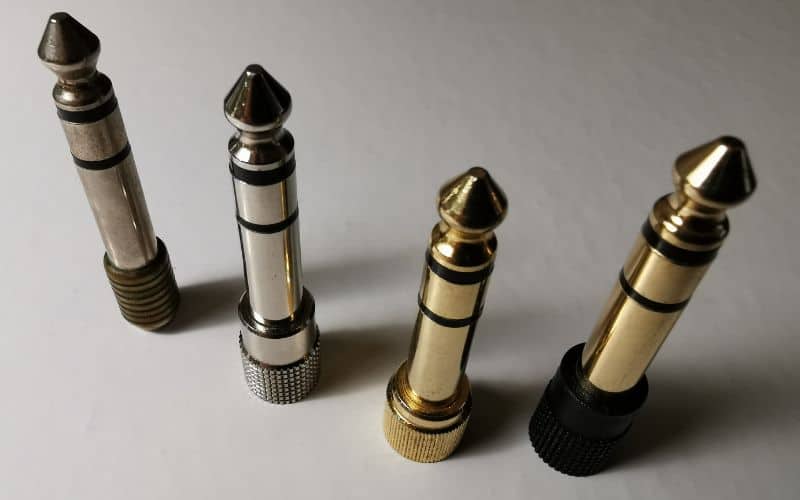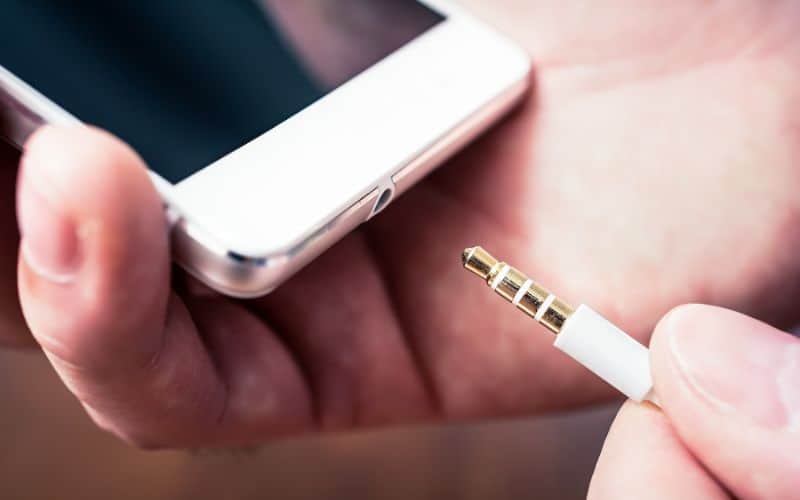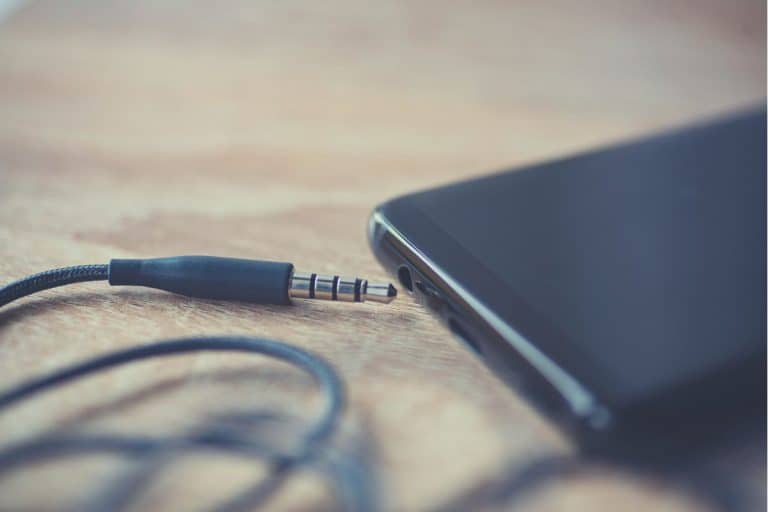Did you know that the size of a headphone jack can make all the difference in your listening experience?
Whether you’re an audiophile or enjoy watching movies on your phone, the right headphone jack size can significantly impact the quality of sound you receive.
But what is the standard headphone jack size? Is there even such a thing? This article will cover everything and more.
Get ready to discover the ins and outs of headphone jacks and learn why size does matter.
Understanding Headphone Jack Sizes
Do you ever wonder why your headphones or earbuds don’t fit into every device you own? That’s because not all headphone jacks are the same size. Understanding headphone jack sizes is vital to ensure compatibility between your audio devices.
The most common and widely used headphone jack size is the 3.5mm jack. This jack size is used by most headphones, earbuds, and analog-wired audio devices.
However, there are other sizes available depending on the device and application.
The 6.35mm jack, also known as a 1/4″ jack, is the largest. It is an audio connector primarily used in musical instruments, professional audio equipment like mixers and amplifiers, as well as in high-end or vintage home audio systems.
It’s capable of carrying both mono and stereo audio signals and is often used for balanced audio connections in professional settings to reduce noise and interference.
The 2.5 mm headphone jack is the smallest size. The plug’s diameter is 2.5 mm, also called a 2.5-micro jack. Micro jacks are used to connect smartphones and other players. The micro-jack is used only for audio transmission.
While headphone jack plugs usually come in single-format versions, adapters are handy for using different inputs and electronic devices. The 3.5 mm to 6.35 mm adapter is the most common, but other niche options are available.

Types of Headphone Jacks
In this section, we will discuss the three most common types of headphone jacks: 2.5mm, 3.5mm, and 6.35mm.
2.5mm Jack
The 2.5mm jack is the smallest headphone jack size. It is commonly used in older cell phones, MP3 players, and other portable devices.
3.5mm Jack
The 3.5mm jack is the most common headphone jack size. It is used in most headphones, earbuds, and analog-wired audio devices.

6.35mm Jack
The 6.35mm jack is the largest headphone jack size. It is commonly used in professional audio equipment, such as amplifiers and mixers.
The choice of headphone jack size depends on the device you are using and your specific needs. It is essential to consider the advantages and disadvantages of each jack size before making a decision.
3.5mm Jack – The Industry Standard
The 3.5mm jack has been the industry standard for decades. Let’s dive into why this jack size is so popular.
Origin and History of the 3.5mm Jack
The 3.5mm jack was first introduced in the 1950s by the French company Lemo. It was initially used in telephone switchboards but quickly became popular in the audio industry due to its small size and versatility.
Breakdown of 3.5mm Jack Specifications
The 3.5mm jack is cylindrical and typically made of metal or plastic. The dimensions of the jack are 3.5mm in diameter and 14mm in length.
The 3.5mm jack has various contact configurations, including TS, TRS, TRRS, and TRRRS.
- TS – Tip-Sleeve and is used for mono audio signals.
- TRS – Tip-Ring-Sleeve and is used for stereo audio signals.
- TRRS – Tip-Ring-Ring-Sleeve and is used for both stereo audio and microphone signals.
- TRRRS – Tip-Ring-Ring-Ring-Sleeve (you get the picture 🤣) is used for audio, video, and microphone signals.
Common Devices Using 3.5mm Jack
The 3.5mm jack is commonly used in consumer electronics, including smartphones, laptops, MP3 players, and gaming consoles.
It’s also commonly used in professional audio equipment, such as mixers, amplifiers, and recording devices.
Professional Audio and the 6.35mm Jack
Suppose you have been to a concert or seen a professional audio setup. In that case, the audio equipment the professionals uses differs from those used by the general public.
The 6.35mm jack is the standard connector used for headphones and audio equipment in the professional audio world.
The 6.35mm jack is also known as the 1/4 inch jack. It is preferred in professional audio due to its ability to handle higher power and provide better sound quality.
The larger size of the jack allows for a stronger connection and less signal loss, making it ideal for high-end audio equipment.
Compared to the 3.5mm jack, the 6.35mm jack is more robust and durable. It can withstand more wear and tear and is less likely to break or malfunction.
The larger jack size makes it easier to handle and connect in professional environments.
If you have a pair of headphones or audio equipment with a 3.5mm jack, you can still use them with professional audio equipment with a 6.35mm jack. You only need a simple adapter that converts the 3.5mm jack to a 6.35mm jack.
These adapters are widely available and affordable, making connecting your consumer-grade headphones or audio equipment to professional audio equipment easy.
The Technological Shift – Wireless and USB Type-C
The world of audio technology is evolving, and the standard headphone jack is no exception. With the rise of wireless and USB Type-C headphones, the traditional 3.5mm jack is slowly being phased out.
Wireless Headphones
Wireless headphones offer the convenience of no wires and the ability to move around freely. However, they come with a few drawbacks.
First, they require a power source. You will need to charge them regularly. Second, interference from other wireless devices can affect the sound quality.
USB Type-C Headphones
USB Type-C headphones offer high-quality audio and the convenience of a single cable for both power and audio transmission. They also eliminate the need for a separate audio adapter on devices that lack a headphone jack.
However, they are not as widely adopted as wireless headphones and may not work with older devices that lack a USB Type-C port.
These technological changes have a significant impact on the 3.5mm standard. As more devices move away from the traditional headphone jack, it becomes less necessary for manufacturers to include it in their designs.
However, many devices still rely on the 3.5mm jack, which remains the most widely used audio connector.
Choosing the Right Headphone Jack
Are you looking for a new pair of headphones but need clarification about which headphone jack size to choose? Don’t worry. We’ve got you covered.
Compatibility
Regarding compatibility, the 3.5mm headphone jack is the most common size. It’s the standard size for most portable audio devices. If you’re looking for headphones to use with your phone or laptop, then a 3.5mm jack is the way to go.
If you have an older device, check if it uses a 2.5mm jack instead. This size is less common than the 3.5mm jack but is still used in some devices, such as older cell phones and headphones.
For professional audio equipment, the 6.35mm jack is the standard size. This size is commonly used for studio headphones, amplifiers, and other audio equipment. If you’re a musician or audio professional, you’ll need to ensure that your headphones have a 6.35mm jack.
Sound Quality
When it comes to sound quality, the size of the headphone jack doesn’t matter as much as the headphones’ quality. However, some high-end headphones use a 4.4mm audio jack, which can provide better sound quality than a 3.5mm jack.
If you’re an audiophile or a music enthusiast, consider headphones with a 4.4mm jack. However, remember that these headphones can be more expensive than those with a 3.5mm jack.
Frequently Asked Questions
Why do some devices use different headphone jack sizes?
Different devices use different headphone jack sizes based on design, portability, and intended use.
For instance, the 3.5mm jack is compact, making it suitable for portable devices. The larger 6.35mm jack is typically used in high-quality audio equipment because it can often provide a better connection, resulting in improved audio quality.
With the advent of wireless technology, are headphone jacks still relevant?
Despite the increasing popularity of wireless headphones and earbuds, many people still prefer wired headphones for their reliability, superior sound quality, and no need for charging.
Furthermore, professional environments like recording studios primarily rely on wired connections for their precision and stability. Therefore, headphone jacks are still very much relevant.
You may also be interested in the following:
